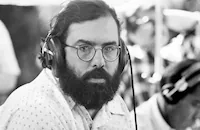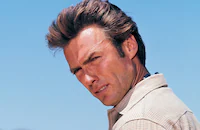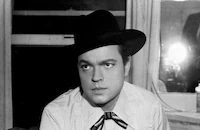A Personal Journey with Martin Scorsese Through American Movies
Brief Synopsis
Cast & Crew
Martin Scorsese
Martin Scorsese
Kathryn Bigelow
Francis Ford Coppola
Brian De Palma
Fritz Lang
Film Details
Technical Specs
Synopsis
Leading American filmmaker Martin Scorsese's entry in the BFI's "The Century of Cinema" series is three-part, 235-minute odyssey. Showing the same mastery of the documentary form as he has of fictional narratives, he chronicles his self-discovery as a filmmaker, using as touchstones both Hollywood masterworks and unsung B-movies. At the same time, he examines the central conflict in American cinema: the director's need to reconcile his role as a team player with his own personal expression.
Cast

Martin Scorsese

Kathryn Bigelow

Francis Ford Coppola

Brian De Palma

Fritz Lang

Carl Franklin

Jodie Foster

Arthur Penn

John Cassavetes

Gregory Peck

Howard Hawks

George Lucas

Clint Eastwood

Andre Detoth

Orson Welles

Douglas Sirk

Samuel Fuller

Elia Kazan

Billy Wilder

Nicholas Ray
Crew
Brydon Bertram Baker Iii
Saul Bass
Elmer Bernstein
Kathryn Bigelow
Raoul A Bruce
John Cassavetes
Sara Chin
Linda Coffey
Francis Ford Coppola
Florence Dauman
Brian De Palma
Andre Detoth
Raffaele Donato
Clint Eastwood
Jean Yves Escoffier
Jean Yves Escoffier
William Flick
Jodie Foster
Carl Franklin
Samuel Fuller
Howard Hawks
Elia Kazan
Fritz Lang
Bob Last
Kenneth I Levis
David Lindbloom
George Lucas
Colin Mccabe
Tom Paul
Gregory Peck
Arthur Penn
Nicholas Ray
Frances Reid
Frances Reid
Thelma Schoonmaker
Nancy Schreiber
Nancy Schreiber
Martin Scorsese
Douglas Sirk
Sharon Sprague
Dale Ann Stieber
William G Webb
William G Webb
Orson Welles
Billy Wilder
Michael Henry Wilson
Film Details
Technical Specs
Articles
A Personal Journey Through American Movies
Along with Scorsese's narration, A Personal Journey uses clips and interviews to create something of a scrapbook of the director's life at the movies. As Scorsese puts it, "I've chosen to highlight some of the films that colored my dreams, that changed my perceptions and in some cases even my life. Films that prompted me for better or for worse, to become a filmmaker myself." And most of the time, these films are not the ones frequently exalted in Hollywood documentaries (the blockbusters, the Academy Award winners). Scorsese is instead fascinated by movies with a clear directorial independence and non-traditional filmmakers, particularly "the ones who circumvented the system to get their vision on the screen."
To most moviegoers, the Scorsese world is inherently a New York story full of tough guys and gangsters, as depicted in his most memorable films: Taxi Driver (1976), Raging Bull (1980) and Goodfellas (1990). And so, it would seem that his formative movie experiences fed on similar stories. But Scorsese's canvas also covers an impressive cinematic range, from religious controversy in The Last Temptation of Christ (1988) to the lush period romance The Age of Innocence (1993) to the big band musical drama New York, New York (1977). And A Personal Journey follows the director down this road, exploring not only the gangster film, but also the Western and the musical. It takes a look, through Scorsese's eyes, at what he calls the Director's Dilemma, the continuing struggle between directorial vision and Hollywood commerce. And examines the Director as Storyteller, as Illusionist , as Smuggler and as Iconoclast. Janet Maslin of the New York Times called A Personal Journey with Martin Scorsese Through American Movies, "a film course with one of the world's greatest teachers."
The first segment, Director's Dilemma, features interviews with Billy Wilder and Frank Capra, who expresses his idea of "one man, one film" -- the belief that the director should be solely in charge of his movie's destiny. But, not every director was comfortable with Capra's "name above the title" freedom. As Scorsese explains, many directors (like Clarence Brown and Michael Curtiz) managed to thrive within the studio system. And others, like Vincente Minnelli, even needed the collaborative influences around him, especially the producer-director relationship, to develop. In the Director as Storyteller section, Scorsese explores three quintessential American genres: the Western with clips from John Ford directing John Wayne in Stagecoach (1939); the Gangster movie from its early roots in Regeneration (1915) to The Roaring Twenties (1939), which Scorsese sites as a major influence on Goodfellas; and the Musical with numbers from 42nd Street (1933) and My Dream is Yours (1949), which inspired Scorsese's New York, New York.
The Director as Illusionist traces the history of film through technical changes (sound, color, widescreen) and developing techniques (dissolves, tracking shots), to create as Scorsese says, "a new language based on images rather than words." Featured clips include D.W. Griffith's The Birth of a Nation (1915) and Intolerance (1916), both versions of Cecil B. DeMille's The Ten Commandments(1923 and 1956), Tourneur's Cat People (1942) and Kubrick's 2001 (1968). Also interviewed is George Lucas, who discusses the way digital effects have changed epic filmmaking. The Director as Smuggler focuses on the world of B-movies, film noir and 50s genres where subtext became part of the story. And directors like Fritz Lang, Aldo Ray and Sam Fuller, who managed to sneak in political or social issues by disregarding the rules all together.
Finally, the Director as Iconoclast looks at the maverick directors from Griffith and von Stroheim to Kubrick and Cassavetes who openly defied Hollywood. Well known cinema rebel Orson Welles explains that he "always liked Hollywood very much. It just wasn't reciprocated." Other interviews feature discussions with Elia Kazan on Brando in On the Waterfront (1954) and Arthur Penn on the desensitized violence of Bonnie and Clyde (1967).
A Personal Journey ends there. Scorsese is not yet ready to take an objective look at his contemporaries and peers. But what the documentary does offer is a reverence for movie making that today's film students, hopefuls and all movie lovers can learn from. And it leaves you wanting to know more. As Scorsese tells students who ask why they should study the classics, "do what painters used to do. Study the old masters. Enrich your palette. Expand the canvas. There's always so much more to learn."
Part 1 - 73 min.
Part 2 - 80 min.
Part 3 - 74 min.
Color, Closed captioning
by Stephanie Thames

A Personal Journey Through American Movies
Quotes
Trivia
Miscellaneous Notes
Released in United States Fall November 23, 1996
Released in United States February 1996
Released in United States June 1998
Released in United States March 1996
Released in United States May 1995
Re-released in United States March 6, 1998
Shown at Cannes Film Festival (Special Screening) May 17-28, 1995.
Shown at Newport International Film Festival (Retrospective Program) June 2-7, 1998.
"The Century of Cinema" is a series of personal documentaries commissioned by the BFI to celebrate the centenary of film. For this series, some of the world's leading filmmakers were invited to provide individual interpretations of the history and development of cinema in their countries. The result is a fascinating look at highly disparate national cinemas and 100 years of film around the globe.
Began shooting July 1993.
Completed shooting August 1993.
The participating filmmakers include: George Miller (Australia), Stephen Frears & Mike Dibb (England), Shu Kei (China), Anne-Marie Mieville & Jean-Luc Godard (France), Edgar Reitz (Germany), Mrinal Sen (India), Donald Taylor Black (Ireland), Bernardo Bertolucci & Enrico Ghezze (Italy), Nagisa Oshima (Japan), Jan Sun Woo (Korea), Nelson Pereira dos Santos (Latin America), Sam Neill & Julie Rymer (New Zealand).
The participating filmmakers include: Mohamed Tazi (North Africa), Pavel Lozinski (Poland), Stig Bjorkman (Scandinavia), Jean Pierre Bekolo (Sub-Saharan Africa), Sergei Selyanov (USSR/CIS), and others.
videotape
Released in United States February 1996 (Shown in New York City (MOMA) as part of series "The Century of Cinema" February 23-24, 1996.)
Released in United States March 1996 (Shown in New York City (American Museum of the Moving Image) March 9-10, 1996.)
Re-released in United States March 6, 1998 (Gotham Cinema; New York City)
Released in United States May 1995 (Shown at Cannes Film Festival (Special Screening) May 17-28, 1995.)
Released in United States June 1998 (Shown at Newport International Film Festival (Retrospective Program) June 2-7, 1998.)
Released in United States Fall November 23, 1996













